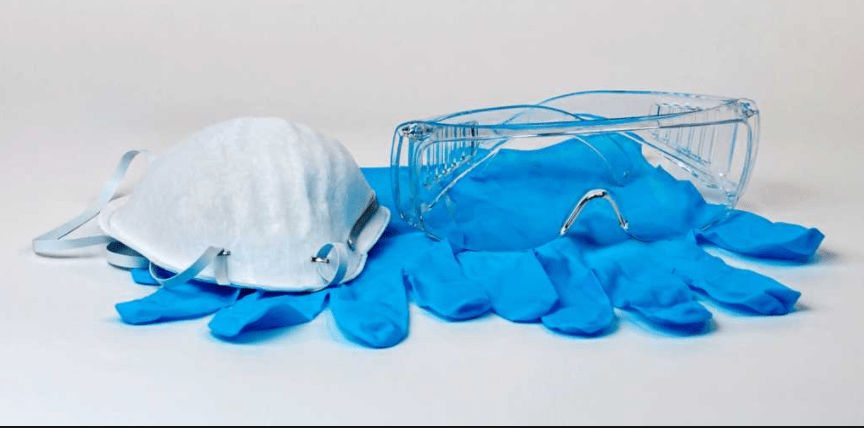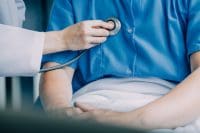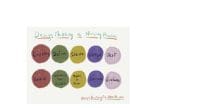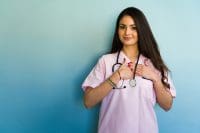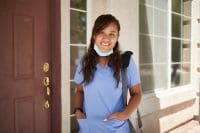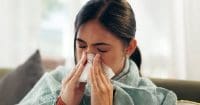I recently spoke to Joel Rose of NPR about the on-going struggle for school nurses to get the necessary PPE. The article and the audio clip are available here: Yep, Masks And Protective Gear Are Still Hard To Get — Especially For Small Buyers
When schools first closed in mid-March many school nurses cleared out our health office closets of all PPE, including masks, gowns, and gloves to donate supplies to nurses on the frontline of COVID, hospitals. Well, now COVID has come to school, our cupboards are bare, and school nurses are the new frontline of this deadly virus. #COVID19 is now the 3rd leading cause of death in the US.
One of the barriers to safe reopening is the lack of PPE for our school nurses, for the staff monitoring the isolation areas, and those who will be working closely with our most vulnerable students. The PPE supply chain is woefully inadequate, overburdened and supplies have been on backorder for months. Many school nurses are piecemealing supplies together to get started, but do not have stock in their offices and have no idea when this essential safety equipment will be delivered.
Procuring N95 masks is especially difficult because distributors do not consider school health offices to be healthcare facilities. Even if we could get these masks, which have been found to be the most effective in stopping exposure to the virus, they must be fit-tested so that you have the safest seal. This requires an exam and proper fitting by an outside agency like a hospital system or EMS. There is confusion over whether N95 masks are necessary at school. They are certainly most effective when doing aerosolizing procedures like a nebulizer treatment, which may be limited during COVID. However, shouldn’t school nurses have the highest level of protection because we have the most chance of exposures? We are not in a bubble, we are responsible for the entire school community.
All PPE is not created equal. A school nurse reached out to me anonymously to share a picture of the gowns that her school district ordered. They looked like thin trash bags that she could poke her finger through, and the sides were open and had to be taped closed. School nurses should not be relegated to ordering PPE from Amazon as a last resort to try to stay safe. One NJ school nurse shared that as hard as she tried, she could not get N95 masks for her district. So instead, she went to the hardware store and purchased non-medical grade masks. She plans on wearing additional masks, most likely self-funded, to add layers of protection. What will happen when school nurses, who are most at risk for exposure at school, get sick?
Difficulty procuring PPE is a national issue. But some states like Delaware have a coordinated effort with their Office of Emergency Management to provide all schools and school nurses with PPE including medical grade and non-medical grade masks, gloves, face shields, and gowns. Each school district has a dedicated liaison to the DE Department of Public Health to coordinate these important efforts. We can look to our neighbor in DE for best practices moving forward.
COVID-19 is coming to schools and school nurses are the new frontline of this deadly virus. We have to ask ourselves if we are fully prepared to keep our staff and students safe. If the answer is no, for now, we must begin the school year fully remote because all PPE is not created equal and this virus does not care if we are ill-equipped. Should we be taking that risk?

Robin Cogan, MEd, RN, NCSN is a Nationally Certified School Nurse (NCSN), currently in her 20th year as a New Jersey school nurse in the Camden City School District. She serves on several national boards including The American Foundation for Firearm Injury Reduction in Medicine (AFFIRM), a gun violence prevention research non-profit organization and the National Board of Certification for School Nurses (NBCSN). Robin is the Legislative Chair for the New Jersey State School Nurses Association (NJSSNA). She is proud to be a Johnson & Johnson School Health Leadership Fellow and past Program Mentor.
She has been recognized in her home state of New Jersey and nationally for her community-based initiative called “The Community Café: A Conversation That Matters.” Robin is the honored recipient of multiple awards for her work in school nursing and population health. These awards include 2019 National Association of School Nurses (NASN) President’s Award; 2018 NCSN School Nurse of the Year; 2017 Johnson & Johnson School Nurse of the Year; and the New Jersey Department of Health 2017 Population Health Hero Award. Robin serves as faculty in the School Nurse Certificate Program at Rutgers University-Camden School of Nursing, where she teaches the next generation of school nurses. She was presented the 2018 Rutgers University – Camden Chancellor’s Teaching Excellence Award for Part-time Faculty.
Robin writes a weekly blog called The Relentless School Nurse. You can also follow her on Twitter at @RobinCogan.

